As a filmmaker, Jesse V. Johnson is a refreshing throwback. Yes, there are big action pieces and breathtaking fight sequences. His films are populated with stars that never quite ascended or have begun to fade. But Jesse V. Johnson will do his damnedest to have viewers walk away from his films satisfied. These are not backdoor advertisements for other products. These are complete movies.
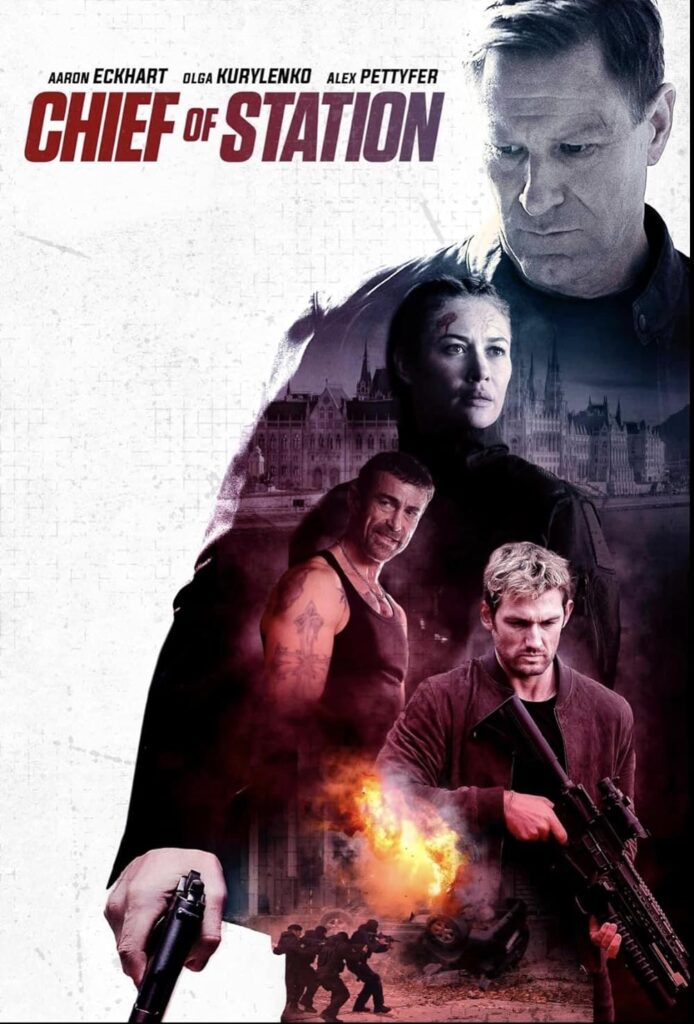
His latest film, CHIEF OF STATION, written by George Mahaffey, is one of the few Johnson hasn’t written himself. His first, in fact, since 2021’s HELL HATH NO FURY. Nevertheless, the film is unmistakably Johnson’s. The movie is shot by frequent Johnson collaborator Jonathan Hall. They’ve previously worked together on BOUDICA, TRIPLE THREAT, WHITE ELEPHANT, and the fantastic AVENGEMENT. Hall never falls into the style of action cinematography popularized by Oliver Wood on THE BOURNE IDENTITY. Handheld, rapidly moving cameras and frequent cutting have papered over the deficiencies of bad fight choreography now for over two decades. It doesn’t matter if the stars and stunt coordinator can’t put together a fight if the camera is the star. In Johnson’s work, the camera is thankfully only an observer.
If you’ve been following Johnson’s work for a while, there might be an inclination to wonder where frequent collaborator Scott Adkins is. CHIEF OF STATION doesn’t call for his fresh-faced, soft-spoken charm. Where Adkins seems touched by greatness in every fight and just a bit overwhelmed when the heat gets turned up in dialogue, this film calls for someone who conveys the opposite: effortless skill and charm in dialogue, with looks like each fight will be their last. The movie essentially recasts the broken-down prizefighter archetype as an old spy, and Aaron Eckhart’s worried brow and practiced smiles convey that energy perfectly. He’s been carving out a space for himself in the dad action space, and he has that “I wish I wasn’t doing this” energy that makes these films click.
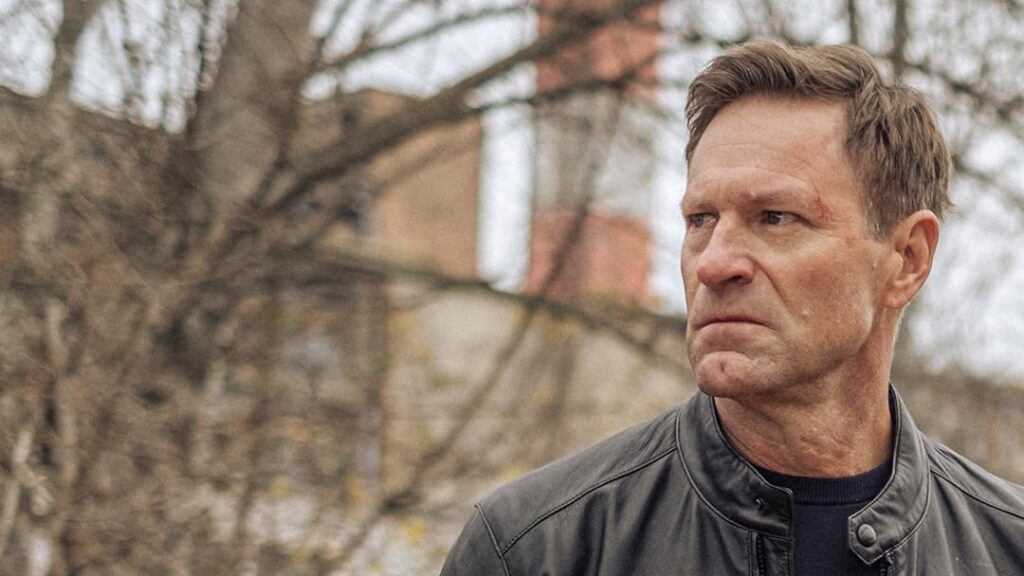
Jonathan Hall shoots star Aaron Eckhart like a man in his mid-fifties who’s not built for a fight. When he’s in a fightm we feel every punch land like a sledgehammer through paper mâché. Little touches like taking the time to bandage a hand resonate. Through them, we get a better sense that Eckhart is playing a human, not an abstract icon.
The script is straightforward enough. Aaron Eckhart plays Ben Malloy, a spook assigned to work in Eastern Europe. When we meet him, he’s playing shell games to disrupt dead drops like the best of them, and he seems to share that same kind of old-fashioned respect for opponents and rivals that Roger Moore era James Bond would. Then his wife Farrah, played by Laëtitia Eïdo, is killed in an explosion in front of him. Then, in short order, twin tracks of urgency are set up. His son has been kidnapped by whatever spy agency has killed his wife and it seems the CIA is content to let doubts about Farrah roll over to Malloy.

The movie unspools so many of the things that are comfortable and familiar within the genre. We get a rendezvous with an old rival who may know more than he is letting on, meeting with an old contact who propels the film into the second act, the tech guy sidekick who delivers exposition as quickly as possible via phone and, my favorite, ally of the deceased wife that our protagonist never knew existed.
Some might lament and ask, “You’re saying this movie is full of spy movie tropes. Are you saying that’s good?” Yes, I am. There are tropes that have reached a place of settled familiarity because they work in the hands of skilled filmmaker. When we order a burger, we don’t concern ourselves with how the burger innovates. We want to know the person working the grill knows what they are doing. Johnson knows what to do on the grill.
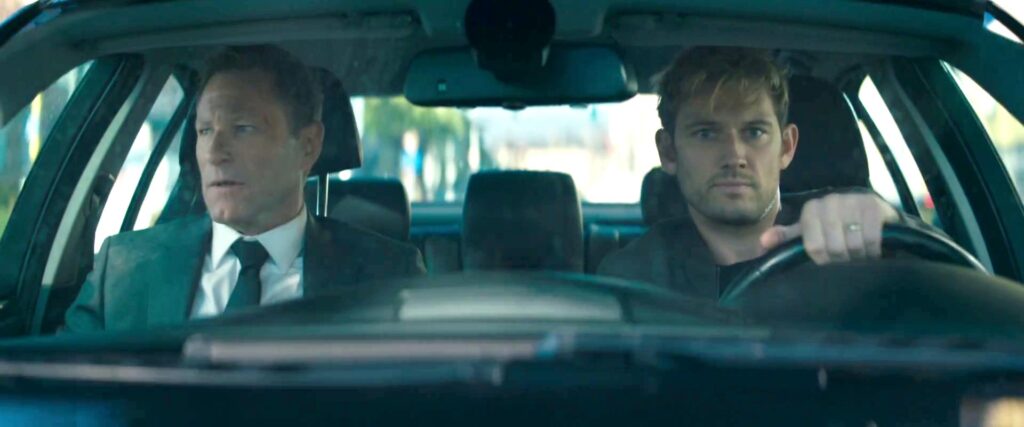
Through the film’s taut 97-minute runtime, the cast and crew make it clear they know what they are doing. The film is shot at its primary location of Budapest, which means wider shots of the city giving us a sense of place. So often films shot on location have to narrow their visual scope because the shooting location couldn’t really pass for the story location. Not the case here. A major set piece is set on a barge on the Danube River and throughout whenever Johnson can frame combatants against large windows revealing the river and city he does. Sean Murray’s score is propulsive but never overbearing.
Most important to me, though, is that Johnson treats his cast like movie stars. He frames and edits around Eckhart as if we live in a universe where Eckhart’s star never faded. Johnson sets out to convince the viewer that Eckhart has the same “dad cool” that TAKEN–era Liam Neeson did. When Olga Kurylenko shows up, she’s treated like an anticipated arrival, and I popped for it. She’s competent, cool and always knows a bit more than the audience. Use the language of film to tell me someone’s a big star and do it well and I’ll believe you.
There’s a romance to Johnson’s work. He believes action is worth showing, not hiding. He thinks stars are bigger than franchises and that a well-executed trope can have the same power as a familiar folk tale. I loved my time in Budapest with Ben Malloy. CHIEF OF STATION is tense, violent, thrilling and, perhaps most rewardingly, it’s familiar and comfortable in its construction. Spend an afternoon with it. You won’t be disappointed.
CHIEF OF STATION is available to stream now!
Tags: Aaron Eckhart, Action Film, Action Films, Action Movies, Alex Pettyfer, Avengement, Boudica, Budapest, Chief of Station, Chris Petrovski, Daniel Bernhardt, Europe, George Mahaffey, Hell Hath No Fury, James Bond, James Faulkner, Jesse V. Johnson, Jonathan Hall, Laetitia Eido, Liam Neeson, Nick Moran, Nina Bergman, Olga Kurylenko, Oliver Wood, Roger Moore, scott adkins, Sean Murray, Taken, The Bourne Identity, Triple Threat, Vertical Entertainment, White Elephant

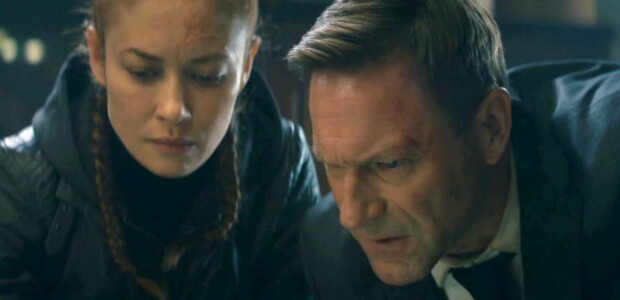
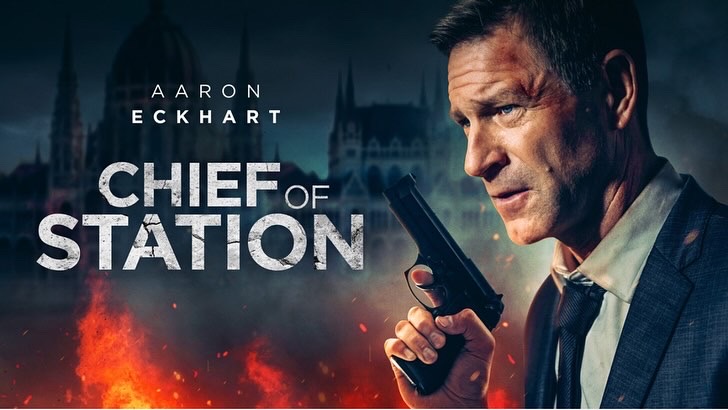

No Comments